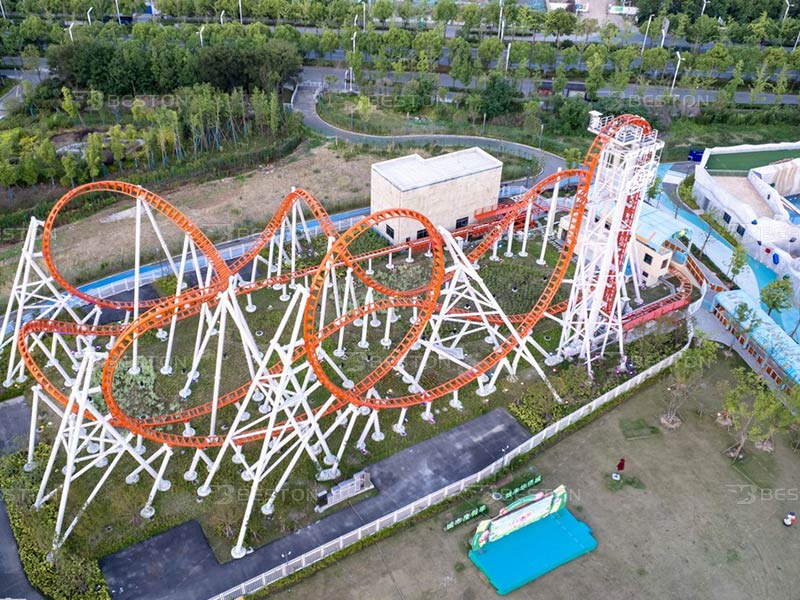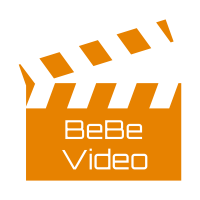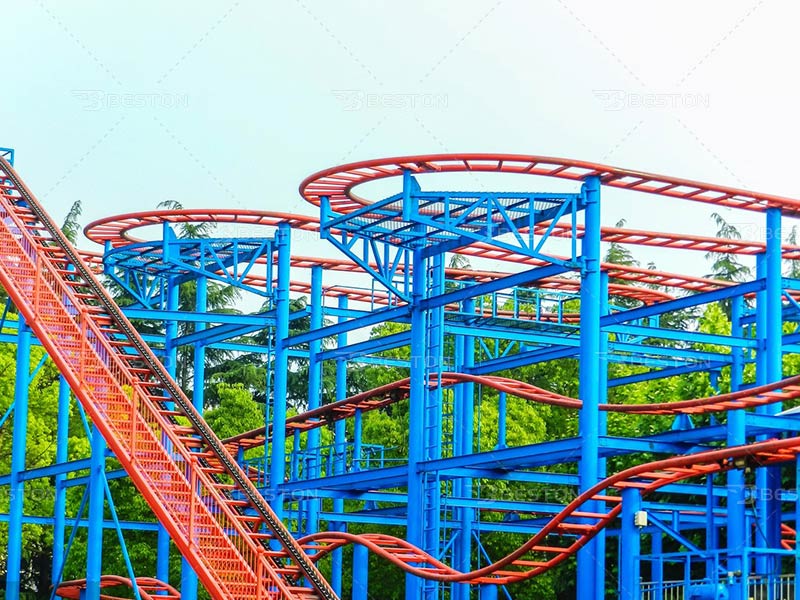Roller coasters come in various types and designs, each offering a distinct riding experience. Here are some common types:

1. Wooden Roller Coasters:
- Classic Design: Traditional roller coasters for sale made primarily of wood, known for their nostalgic charm and rattling, kinetic ride experience.
- Thrill Factor: Often characterized by sudden drops, sharp turns, and a rougher ride compared to steel coasters.
2. Steel Roller Coasters:
- Versatility: Steel coasters offer more design flexibility due to their construction material, allowing for various track layouts and smoother rides.
- Inversions: Many steel coasters feature inversions, including loops, corkscrews, and barrel rolls, providing thrilling upside-down experiences.
3. Inverted Roller Coasters:
- Hanging Cars: Riders’ seats are suspended beneath the track, offering a unique sensation of flying or hanging, and allowing for more intense maneuvers.
- Immersive Experience: Inverted coasters often include inversions and sharp turns, accentuating the feeling of flying.
4. Floorless Roller Coasters:
- Open Seating: Riders sit in open seats with no floor beneath them, enhancing the feeling of speed and freedom.
- Inversions and Drops: Similar to inverted coasters, they feature inversions and intense drops while providing a more open, unobstructed view.
5. Stand-Up Roller Coasters:
- Riding Position: Riders stand in a straddled position rather than sitting, offering a different sensation and experience.
- Less Common: Less prevalent in recent years due to potential discomfort reported by riders.
6. Launched Roller Coasters:
- Accelerated Start: These coasters use powerful launches, often via hydraulic or magnetic systems, to propel riders to high speeds from a standstill or at various points along the track.
- Intense Thrills: They offer rapid acceleration and high-speed elements, focusing on quick bursts of excitement.
7. Hyper Coasters:
- Extreme Heights: These coasters typically exceed 200 feet in height, emphasizing large drops and providing an exhilarating sensation of speed and airtime.
- Focused on Airtime: They prioritize “airtime,” the feeling of weightlessness experienced at the peak of hills and drops.
8. Dive Coasters:
- Vertical Drops: Known for their steep vertical drops, often at 90-degree angles, giving riders a moment of suspense before the descent.
- Immersive Elements: Some dive coasters feature holding brake sections, suspending riders momentarily before the plunge.
9. Wild Mouse Coasters:
- Sharp Turns: Compact coasters characterized by tight, hairpin turns, and abrupt changes in direction rather than steep drops or inversions.
- Twists and Turns: Focus on rapid, tight turns that create a feeling of unpredictability.
10. Dual/Racing Roller Coasters:
- Parallel Tracks: Two coaster tracks run side by side, allowing for simultaneous races or duels between trains.
- Competitive Thrills: Riders experience the thrill of racing against another train, often vying for victory.

